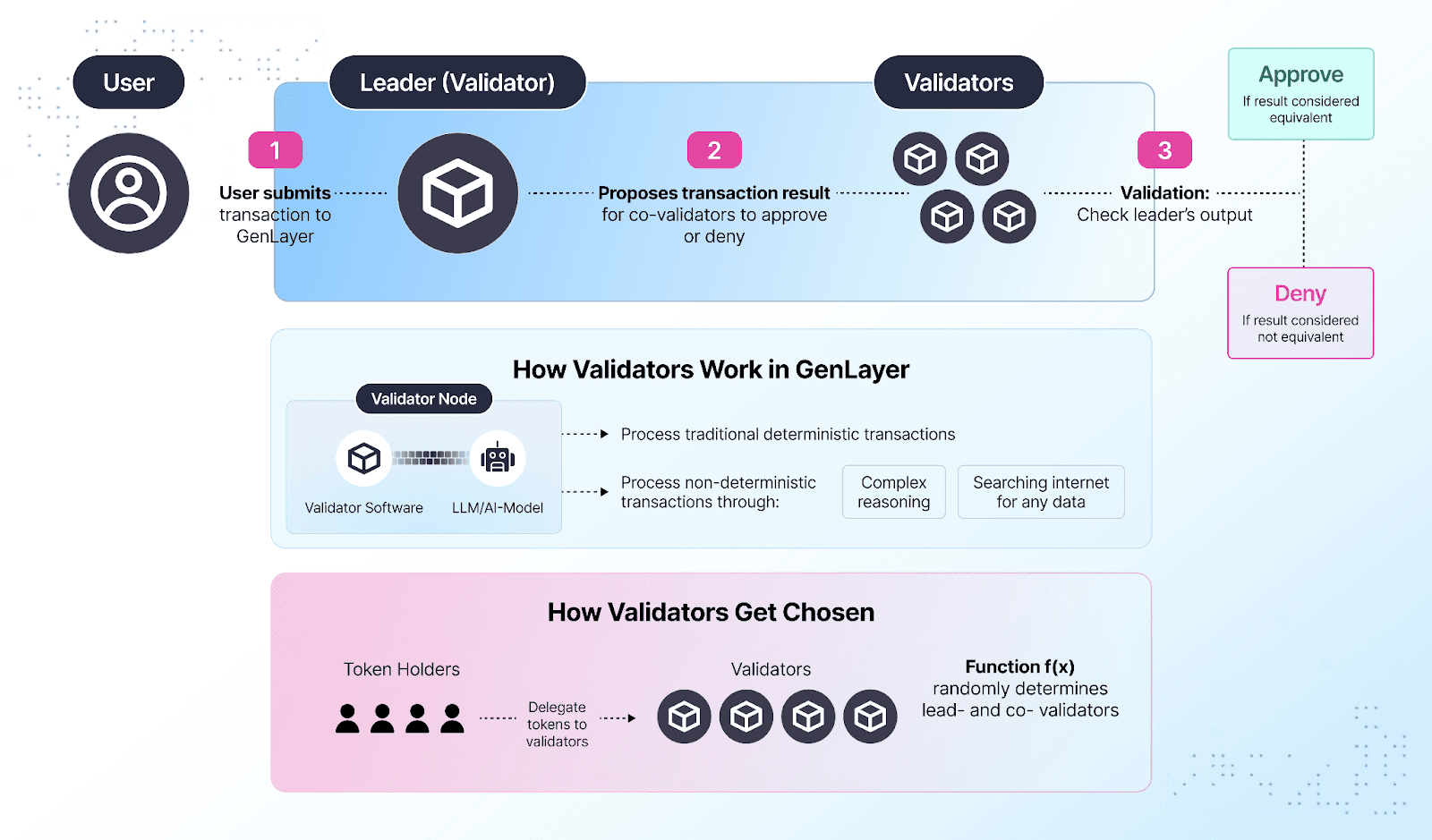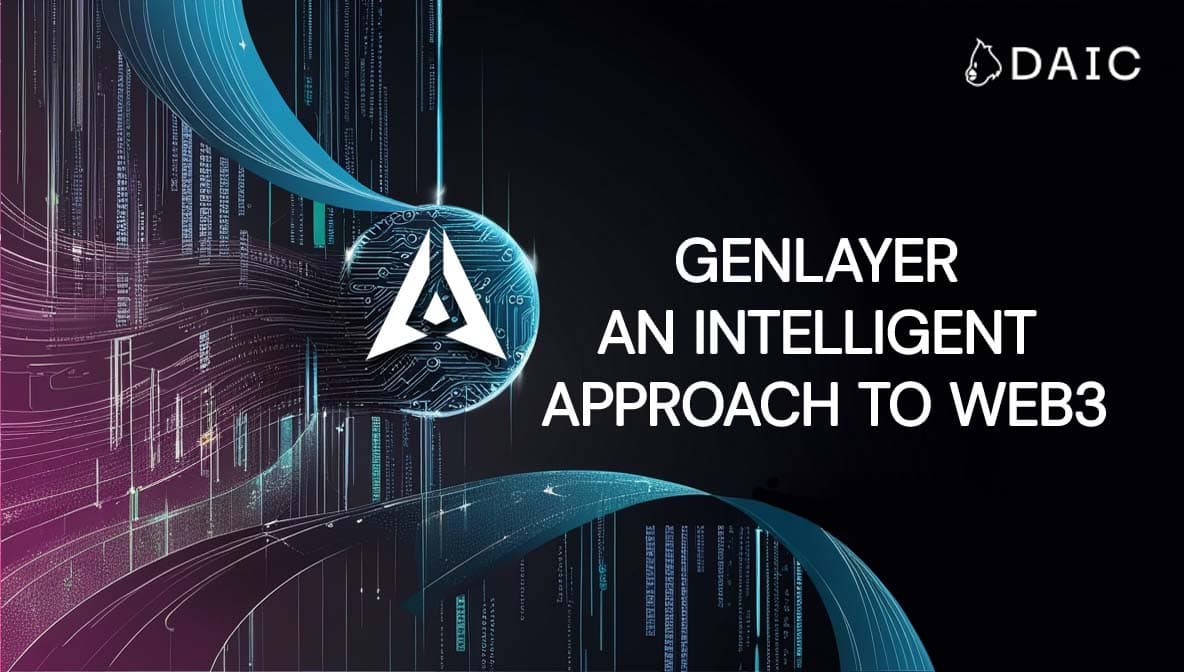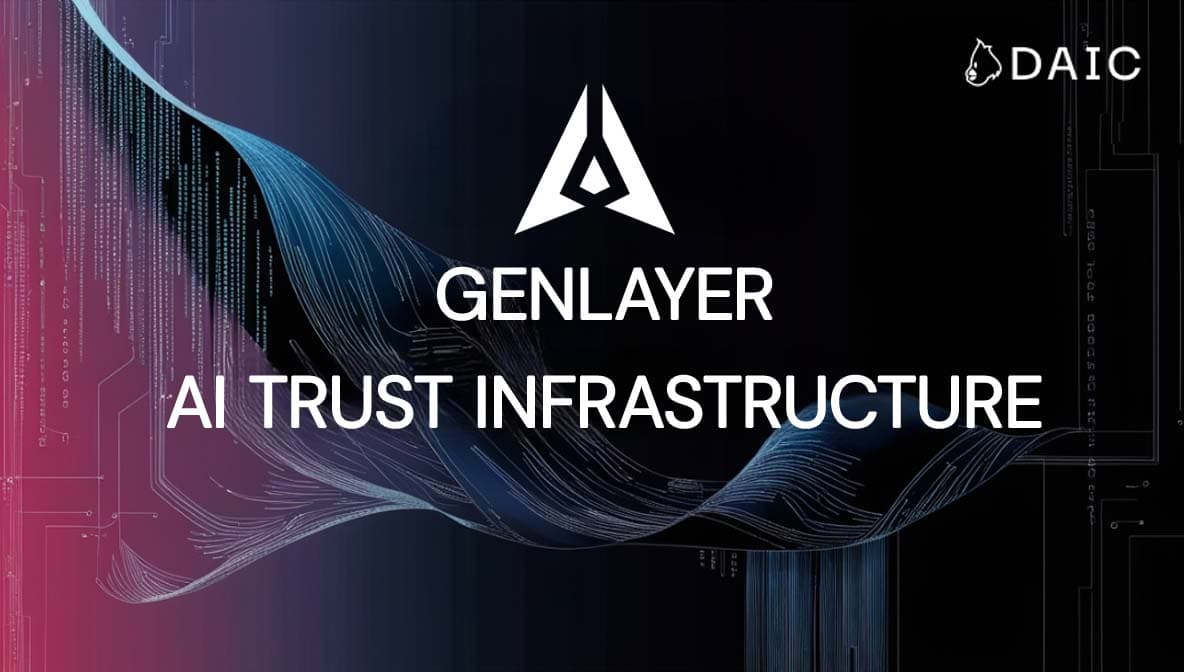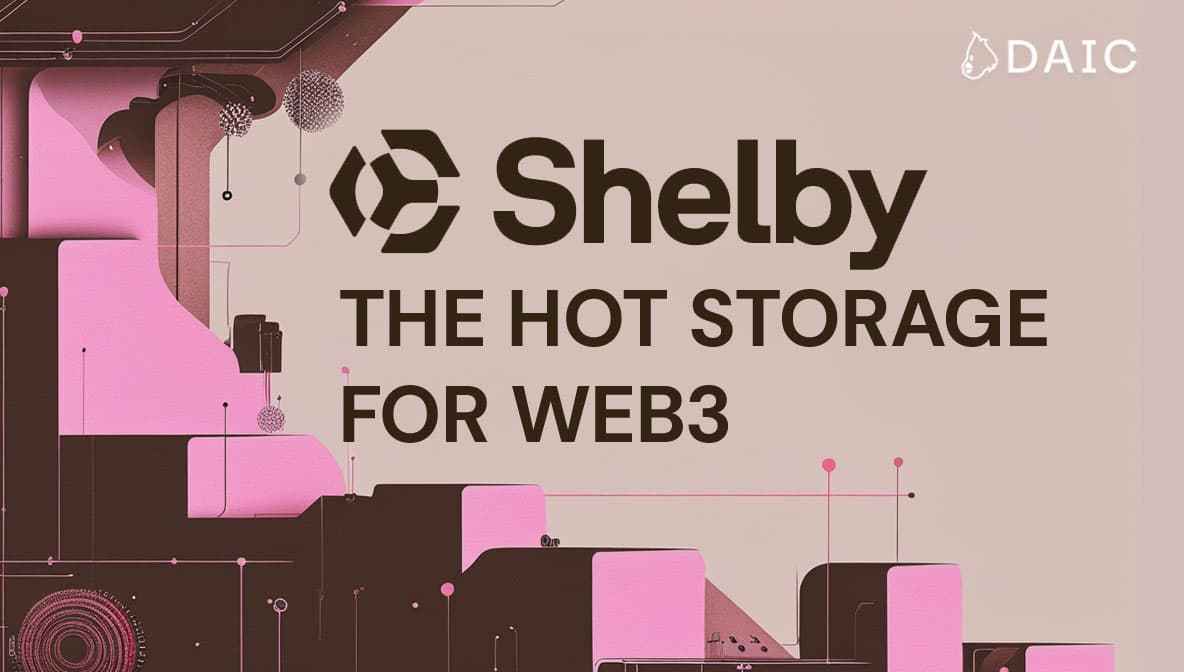What if a smart contract could do more than just execute pre-defined, on-chain logic? Imagine if it were able to read a news story, interpret a contract, or make an intelligent decision? These things have been beyond the reach of blockchains for years because they're hardcoded, deterministic systems. GenLayer is a new protocol that opens up these new features by incorporating AI into its consensus layer so that developers can build a new class of "Intelligent Contracts." This technical deep dive explores the architecture that makes it all possible.
Key Takeaways
- A New Consensus Model: "Optimistic Democracy" builds solid consensus on subjective data without a single correct answer.
- AI-Powered Decisions: GenLayer uses AI to enable trustless judgments on complex, real-world data.
- Direct Web Access: Intelligent Contracts can connect to any live website without relying on external oracles.
- Modern AI safety: A multi-layered model using "Greyboxing" protects against fresh threats like prompt injection.
- Scalability via Rollups: The protocol integrates with Ethereum rollups to achieve high transaction throughput and low fees.
- Universal Interoperability: GenLayer acts as an intelligence layer accessible to any application on any blockchain through interoperability protocols.
- Toolkit for Builders: A browser-based Studio, live testnet, and grant program are now available for developers.
If you've spent time in the crypto world, you've heard the term "deterministic." It's the golden rule for blockchains like Ethereum: the same input must always create the exact same output. This predictability is what makes them secure, but it's also a golden cage, making it incredibly difficult for dApps to interact with the messy, unpredictable data of the real world.
GenLayer breaks out of this cage, introducing a new architecture that can safely handle the "what ifs" and "maybes" of non-deterministic operations - like asking an AI a question or reading a live news feed and still create a secure, decentralized source of truth.
In this deep dive, we'll walk through how all these pieces fit together.
A Look at GenLayer's Core Architecture
At the heart of it all is the GenVM (GenLayer Virtual Machine), the "stage" upon which Intelligent Contracts play. A WASM-based virtual machine specifically designed to operate non-deterministic functions in the context of a decentralized ledger. What truly sets the GenVM apart is the fact that it runs a Python interpreter. This was a deliberate decision to welcome the global AI and machine learning community, enabling them to build powerful contracts in a familiar language with its rich ecosystem of libraries.
The GenVM functions as an intelligence environment that enforces standard, predictable behavior for regular code while carefully gating the "non-deterministic" operations like calling an AI model or accessing a website. Each of these special actions are carefully logged and then subject to on-chain validation by the consensus mechanism.
The core idea of GenLayer's design is being an interoperable intelligence service for the entire Web3 ecosystem. Through strategic alliances with rollup ecosystems like ZKsync and Caldera, dapps can seamlessly plug into GenLayer's AI-powered consensus. And through general interoperability protocols, GenLayer becomes available everywhere, and any application can pass a rich, subjective task and receive a trustless, AI-validated answer.
The Consensus Engine: Optimistic Democracy
This is where the magic happens. How does a network agree on a subjective answer? Through Optimistic Democracy. It's an enhanced dPoS system, and its rules are written in Solidity smart contracts that run on top of the ZKsync Elastic Network. It's a new paradigm designed specifically to handle the ambiguity that traditional blockchains cannot.
Every validator on the network is designed to run their own AI model. The protocol is model-agnostic, meaning some validators might use ChatGPT, while others could use LLaMA, Claude, or any other capable LLM. When a transaction contains a non-deterministic component, like summarizing an article, it's the validator’s own AI model that handles the task.

So, when a transaction needs a subjective decision, how does the process start?
The system uses a Verifiable Random Function (VRF) to randomly select a small committee of at least five of these AI-powered validators. The odds of being chosen are proportional to a validator's total stake. One validator from this group is then designated the Leader, and the others become the Co-Validators.
The other Co-Validators then act as the jury, performing a rigorous two-step verification. They first perform a deterministic check - re-running the transaction with the Leader's exact outputs to ensure the final state change is identical. If that check passes, they then use the developer-defined rulebook to judge the subjective parts of the Leader's work.
If a majority of the jury agrees the Leader's result is valid, it's provisionally accepted. What if you think the jury got it wrong? Anyone can post a bond to file an appeal during the Finality Window. This escalates the case, bringing in double the number of validators to re-examine the transaction. This can repeat until a final consensus is reached. A transaction is only truly final and irreversible after this window closes.
Intelligent Contracts: Handling Subjective Data
Think of the Intelligent Contract as the "brain" of any application built on GenLayer. While it lives and runs in the system's special execution environment, the GenVM, its real job is to manage complex tasks that ordinary smart contracts can't handle.
A key part of managing these tasks is the Intelligent Contract's native ability to access live data directly from the internet, a feature that can make traditional oracles obsolete in many use cases. Developers can use built-in functions like “gl.get_webpage()” to retrieve data from any public web source. This is a powerful tool, as it allows a contract to base its logic on the most current information available in the real world. As with all non-deterministic operations on GenLayer, any retrieved web data is then validated across multiple validators to ensure consistency and reliability before it is used by the contract.
When a contract needs to perform one of these actions - getting information from the internet or asking an AI a question - it passes that job to the network's validators, who are all connected to Large Language Models. To get a reliable result from the LLMs, developers must craft clear and specific prompts. A crucial best practice is to require the AI to respond in a strict format, which makes the output easy for the contract to parse without errors.
The developer then chooses the right Equivalence Principle to act as the "rulebook" for the validators. This principle tells the validator jury how to agree on a subjective answer, ensuring that even complex questions have a reliable, decentralized outcome. For example, the developer can set criteria where the rule might be, "The summary must contain these three key facts," not "The summary must be these exact 100 words".
Intelligent Contracts also come with special tools for building more advanced and connected applications. They aren't designed to be isolated islands, they can communicate with each other to create more powerful and modular systems. One contract can read data from another or trigger a state change in another contract.
For developers working with truly sophisticated AI applications, GenLayer provides a powerful native feature called the Vector Store. Think of this as a specialized on-chain memory bank that allows an Intelligent Contract to understand and work with the meaning of text, not just keywords, by enabling semantic search. It does this by storing text data as "vector embeddings" - numerical representations of the text's semantic meaning - which enables complex comparisons and retrievals. This built-in capability makes way for a new class of on-chain tools that previously seemed impossible, such as context-aware search engines or recommendation systems.
The Rollup Integration Model
To deliver its industry-leading capabilities at scale, GenLayer integrates with established Ethereum rollups. This strategic decision is paramount to optimize transaction volume and reduce fees, allowing GenLayer to combine its unique AI consensus with the scalability and robust security guarantees of the Ethereum mainnet. By moving the bulk of its computation off-chain, GenLayer optimizes network capacity while offering users significantly reduced gas fees.
The transaction processing in this combined model is seamless. When a user makes a transaction to the rollup, the transaction is executed in the context of GenLayer's GenVM. The Optimistic Democracy consensus algorithm is then used to verify the result of the transaction. Upon the attainment of consensus, the resulting state update is included in a batch with other transactions and then submitted at regular intervals to the Ethereum mainnet. The batch integrity is then cryptographically locked securely on Layer 1 via fraud proofs or validity proofs, depending on the specific rollup solution.
This architecture provides clear benefits to developers and users alike. Developers can leverage their existing Ethereum infrastructure and tools, with on-demand access to the unique features of GenLayer. Developers can "call" GenLayer within their own applications to run subjective tasks and receive back a trustless, AI-validated response.
Although some rollup-specific considerations will have to be made by developers, such as potential wait times for withdrawing assets back to Ethereum, this combined approach constructs a powerful foundation which unites the revolutionary capabilities of Intelligent Contracts with the established scalability of Layer 2 solutions.
Hardening the System: A Security-First Approach to AI
GenLayer is aware that decentralized ledgers are high-stakes environments where security is the top priority, and that AI models introduce new vector attacks. The primary risk is the injection of malicious prompts that influence a Large Language Model (LLM) to produce unwanted or malicious content. To mitigate this, the protocol employs a multi-layered model of security that encompasses architectural defenses, developer best practice, and economic incentives.
The first and most fundamental layer of protection is the consensus model itself. Based on an extension of the Jury Theorem, GenLayer uses a committee of a few, independent validators for each decision. The idea is that a diverse set of wise jurors will be much more likely to draw the right conclusion and be resistant to manipulation. By having validators use different LLMs, GenLayer ensures that an attack successful against one model is unlikely to succeed against the entire jury.
The second level is a new approach referred to as Greyboxing. It is a sophisticated filtering mechanism that pre-processes inputs prior to them reaching an LLM. It cleanses the instructions via techniques like paraphrasing and retokenization to remove potentially harmful inputs. The Greyboxing parameters for each validator can be individually configured, making the validator set even more diversified and making coordinated attacks extremely difficult and expensive to implement.
While the protocol provides robust defenses, the developers also have to design with security. The best practices are:
- Limiting Inputs: Developers are strongly advised to define prompts in the contract code and to disallow direct, free-form text input by users wherever possible.
- Limiting Outputs: There has to be a well-defined specification and enforcement of strict limits on what can be permitted as output from the AI model so that it cannot lead to unforeseen action.
- Adding a Human-in-the-Loop: Developers can implement an additional human verification step for most and particularly sensitive operations, providing an additional layer of verification before a decision is finalized.
Finally, the system relies on robust economic security measures. Validators and their delegators are rewarded for honest work, but their staked GEN tokens can be slashed as a penalty for incorrect or malicious decisions. Following this is an Appeals mechanism. When a decision has been made, the outcome may be disputed by any concerned party with the submission of a money bond. This will result in a re-validation of the transaction by a bigger pool of validators, typically twice the size of the initial one, which presents an even more reduced success rate for malicious inputs. This makes it much too expensive for an attacker to force a malicious outcome.
The Developer Toolkit: From Sandbox to Testnet
The GenLayer has established a full suite of tools for developers to go from idea to a live, intelligent application. The toolkit is designed to be accessible for rapid prototyping while also providing powerful options for local development and testing.
The Prototyping Environment
The heart of the developer experience is the GenLayer Studio, a browser-based, interactive sandbox designed for experimenting with Intelligent Contracts. The Studio replicates the network's execution environment, allowing developers to code in a Python language, test complex AI decision-making with LLMs like GPT-4, and leverage the platform's native web access without needing oracles. It provides a controlled environment to quickly prototype and demonstrate the potential of an application.
For command-line developers, GenLayer provides the CLI that streamlines how the installation and maintenance of the Studio is managed locally. The CLI boots up and downloads everything needed for developers so that they can start testing with little effort. The toolkit is complemented by a JS Library for web integration, a particular Explorer, and a Wallet, providing a complete ecosystem for builders.
Getting Started on the Live Network
Once a contract has been perfected in the Studio, developers can deploy it to a live environment. The "Asimov" testnet, deployed in June 2025, is the first part of a two-part rollout designed to stress-test underlying infrastructure and consensus mechanism. This will be followed by "Testnet Bradbury" in Q3 2025, which will introduce more advanced features like adversarial testing and multi-round appeals. For those willing to build now, GenLayer also offers a Grant Program to provide funding and support for innovative projects that expand the ecosystem.
Conclusion: The Next Logical Primitive
Whereas Bitcoin gave the world trustless money and Ethereum the infrastructure for trustless applications, GenLayer introduces with it the next logical primitive of the decentralized web: trustless decision-making. It remedies the built-in weakness of the prior blockchains to constrain themselves with strict logic but be unable to deduce the nuance and subjectivity of actual-world data.
By designing an architecture capable of securely handling non-deterministic workloads, GenLayer forms the necessary missing link between on-chain computation and off-chain context. It enables developers to create a new generation of apps that aren't just secure and scalable, but also context-aware and autonomous. This doesn't just improve on existing models, it unlocks the whole potential of what can be built on a blockchain.
The information provided by DAIC, including but not limited to research, analysis, data, or other content, is offered solely for informational purposes and does not constitute investment advice, financial advice, trading advice, or any other type of advice. DAIC does not recommend the purchase, sale, or holding of any cryptocurrency or other investment.


